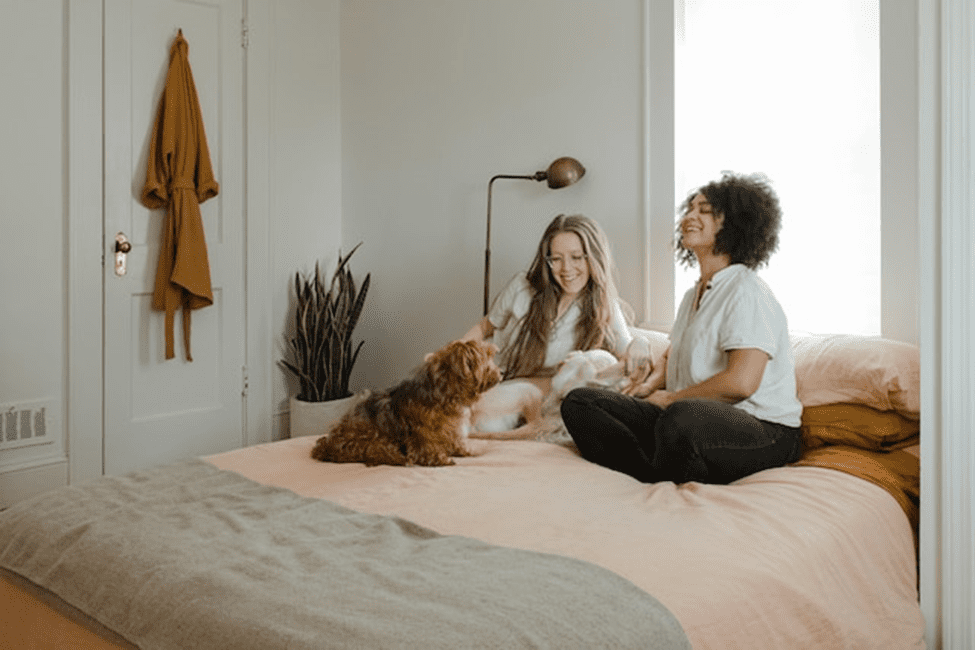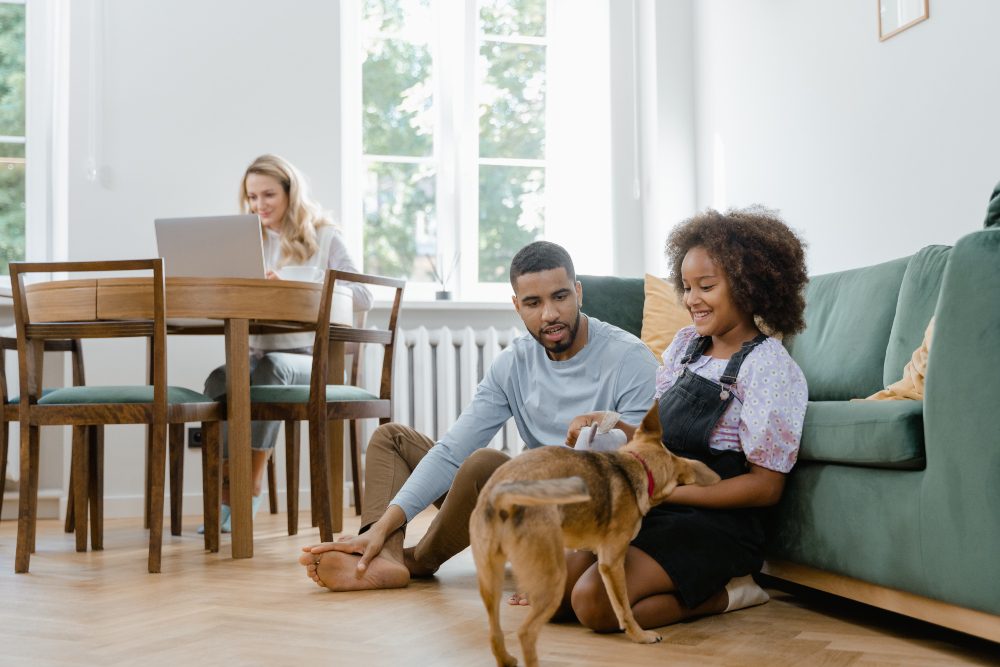Last Updated on April 29, 2024 by teamobn

At least 87 million American households have pets and spend generously on medication, food, veterinary care, and other pet-related expenses. Most people treat their animals as part of the family and consider their needs when remodeling or building a new home.
However, building a home can be expensive, but you can maximize your cost savings by ensuring a good balance between quality, functionality, and cost.
Building a Pet-Friendly Home Without Breaking the Bank
There are numerous cost-saving opportunities throughout the design and construction phases. The following article can help you minimize the costs and create a practical home suitable for your pets.
1. Simple Layout With Durable Flooring
Maintaining a simple floor layout is a great way to minimize the costs of building a new home. Designs with more angles, corners, and other fancy features are more expensive. Pets can be quite messy, and the flooring in your home impacts your pet’s life.
The flooring is a vital factor in your home when you have pets. Most pet owners need stain and scratch-resistant flooring materials that withstand pet nails and dander. You can look for hybrid flooring options because they’re more versatile and durable.
On the contrary, too much carpeting may not be the best option since carpets attract dirt and pet hair. Also, cleaning the floor and removing unpleasant pet odors is difficult.
If your budget is sufficient, you can install hardwood flooring, but this doesn’t mean you are out of options. Laminate and vinyl flooring are durable, pet-friendly, and cost less than hardwood flooring. Similarly, tiles are easy to clean, durable, and offer a cool resting spot for your pets during hot weather.
2. Incorporate Easy-To-Update Design Elements
Your windows, flooring, and roofing require careful planning since they’re costlier to upgrade. However, other design elements are easy to upgrade and often change with prevailing home design trends.
You can minimize the costs by shrinking your budget allocation for these features. Besides, you can update the necessary components to keep up with design trends after moving into the new home.
Hardware like kitchen countertops, cabinet handles, towel racks, and doorknobs are easy to upgrade. If you have a limited budget, choose cost-efficient options in your initial construction phase since you can splurge later as your finances improve.
Features like window treatment should be functional, but low-quality materials and designs can degrade the overall aesthetics of new windows.
Nevertheless, you can find attractive and functional window coverings at affordable prices. While shopping for budget options that meet your aesthetic and functionality requires some legwork, you can save lots of money.
On the other hand, features like faucets and lighting accessories offer unique cost-cutting opportunities. The fittings have fast-evolving trends, so you can buy cheap versions and upgrade to luxury models later.
3. Consider an Open Floor Plan
Open layouts have a huge following among home builders because they are cost-effective, helping you get higher returns on your money. Typically, designing a home with multiple interior walls filled with electrical wiring and plumbing costs more. Similarly, every internal door requires extra labor and trim work –often leading to a bloated construction budget.
Open floor plans use few walls and doors and often require simple plumbing, wiring, and carpentry. Fewer walls and doors mean lower costs. In addition, the layout provides enough working space for contractors –meaning tasks like painting and flooring installation take less time. This translates to lower costs since you’re dealing with simple angles and corners.
Most importantly, open floor plans enhance the functionality of your home. The space dedicated to specific activities can change as your lifestyle evolves. The absence of walls allows you to customize your dining room or other areas depending on your lifestyle.
4. Comfortable and Budget-Friendly Living Space for Your Pets

Ensuring your home has a suitable space for your animals is vital. If you have a horse, determine whether you have the necessary housing structure and enough space in your backyard where the pet can run around.
Most pets and domestic animals spend more time with the family at home. An oversized backyard may not be necessary, but you must maintain a strict exercise routine.
Providing enough indoor and outdoor space is important since the weather can sometimes be unpredictable. Typically, pets require activities and distractions to keep them occupied. Idle pets are easily bored or irritated, which leads to destructive behaviors.
This doesn’t mean you should exceed your budget allocations. For example, most horse barn builders can work with the available space to design a budget-friendly structure for your animals.
5. Prioritize Quality and Functionality Over Fancy Features
Before you consider the available cost-saving strategies in your project, it’s vital to ensure you have a well-designed, functional plan that prioritizes quality living space. Typically, a practical design can serve you in different life stages, and you can enjoy living there for many years. The quality of your living space determines your comfort and experience of living in that house.
A home with optimum functionality allows you to use each space to the fullest, ensuring comfort and satisfaction for your family and pets. Designing a home with quality space involves decisions that ensure each area functions as intended. This enhances flexibility and comfort for the inhabitants.
Some important features that boost the quality of your space in a home may include natural light, connection with nature, and a seamless flow between adjacent spaces. Ultimately, do your best to ensure the house is ready for evolving needs as your lifestyle changes at different stages of your life.
Endnote
While frugality is vital when building a new home, always remember it’s your dream home. You can spend slightly more on important design features and amenities but skimp on less important elements.
Since you’ll be living in this home for years, create a space that makes you comfortable and happy. Most importantly, ensure the living space is flexible to suit your current and future lifestyle.
Watching your building costs is prudent, but you shouldn’t make extreme cost-cutting decisions that diminish the quality of life and make your pets uncomfortable.









